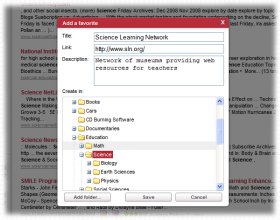|
Education
Web
Viewing 1-4 of 4 total results
Science Junction: Which way is North?
topographic map is a representation of a three-dimensional surface on a flat piece of paper. Contour lines, sometimes called "level lines," join points of equal elevation. The closer together the contour lines appear on a topographic map, the steeper the slope (...
Mapmaking Guide (6-8) Page 7 of 8 www.nationalgeographic.com/xpeditions © 2005 National Geographic Society. All rights reserved. Isoline (also called isopleth) maps use lines to connect points of equal value, such as temperature, rainfall, or elevation. Lines of equal temperature are c...
1
0
Mapmaking Guide (6-8) Page 7 of 8 www.nationalgeographic.com/xpeditions © 2005 National Geographic Society. All rights reserved. Isoline (also called isopleth) maps use lines to connect points of equal value, such as temperature, rainfall, or elevation. Lines of equal temperature are called isotherms, lines of equal rainfall are called isohyets, and lines of equal elevation are called contours. Contour lines are often used on topographic maps. Cartograms distort
7
0
http://www.nationalgeographic.com/xpeditions/lessons/09/g68/cartographyguidestudent.pdf#page=7
www.nationalgeographic.com/xpeditions/lessons/09/g68/cartographyguidestud...
Mapmaking Guide (6-8) Page 7 of 8 www.nationalgeographic.com/xpeditions © 2005 National Geographic Society. All rights reserved. Isoline (also called isopleth) <span class="highlight">maps</span> use lines to connect points of equal value, such as temperature, rainfall, or elevation. Lines of equal temperature are called isotherms, lines of equal rainfall are called isohyets, and lines of equal elevation are called contours. <span class="highlight">Contour</span> lines are often used on <span class="highlight">topographic</span> <span class="highlight">maps</span>. Cartograms distort
Mapmaking Guide (9-12) Page 7 of 8 www.nationalgeographic.com/xpeditions © 2005 National Geographic Society. All rights reserved. Isoline (also called isopleth) maps use lines to connect points of equal value, such as temperature, rainfall, or elevation. Lines of equal temperature are...
1
0
Mapmaking Guide (9-12) Page 7 of 8 www.nationalgeographic.com/xpeditions © 2005 National Geographic Society. All rights reserved. Isoline (also called isopleth) maps use lines to connect points of equal value, such as temperature, rainfall, or elevation. Lines of equal temperature are called isotherms, lines of equal rainfall are called isohyets, and lines of equal elevation are called contours. Contour lines are often used on topographic maps. Cartograms distort
7
0
http://www.nationalgeographic.com/xpeditions/lessons/09/g912/cartographyguidestudent.pdf#page=7
www.nationalgeographic.com/xpeditions/lessons/09/g912/cartographyguidestu...
Mapmaking Guide (9-12) Page 7 of 8 www.nationalgeographic.com/xpeditions © 2005 National Geographic Society. All rights reserved. Isoline (also called isopleth) <span class="highlight">maps</span> use lines to connect points of equal value, such as temperature, rainfall, or elevation. Lines of equal temperature are called isotherms, lines of equal rainfall are called isohyets, and lines of equal elevation are called contours. <span class="highlight">Contour</span> lines are often used on <span class="highlight">topographic</span> <span class="highlight">maps</span>. Cartograms distort
Living History Farm: Contour Plowing
for his entire farming career and remembers when the government urged farmers to change their plowing methods. He says contour plowing created ridges and so the rainwater "wouldn't just come running clear down that hill." Elroy Hoffman says that today there is much less pl...
|
